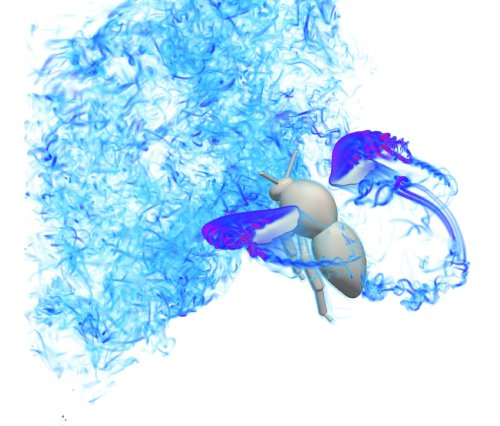The impact of turbulence on flying insects in tethered and free flight : high-resolution numerical experiments
Flapping insects are remarkably agile fliers, adapted to a highly turbulent environment. We present a series of high resolution numerical simulations of a bumblebee interacting with fully developed turbulent inflow. We consider both tethered and free flight, the latter with all six degrees of freedom coupled to the Navier–Stokes equations. To this end we vary the characteristics of the turbulent inflow, either changing the turbulence intensity or the spectral distribution of turbulent kinetic energy. Active control is excluded in order to quantify the passive response real animals exhibit during their reaction time delay, before the wing beat can be adapted. Modifying the turbulence intensity shows no significant impact on the cycle-averaged aerodynamical forces, moments and power, compared to laminar inflow conditions. The fluctuations of aerodynamic observables, however, significantly grow with increasing turbulence intensity. Changing the integral scale of turbulent perturbations, while keeping the turbulence intensity fixed, shows that the fluctuation level of forces and moments is significantly reduced if the integral scale is smaller than the wing length. Additional simulations with laminar inflow, in which the insect’s heading is not aligned with the mean flow, shed light on the role of the incident flow. This is relevant to understand the change of the insect’s orientation due to turbulent perturbations. Our study shows that the scale-dependent energy distribution in the surrounding turbulent flow is a relevant factor conditioning how flying insects control their body orientation.
